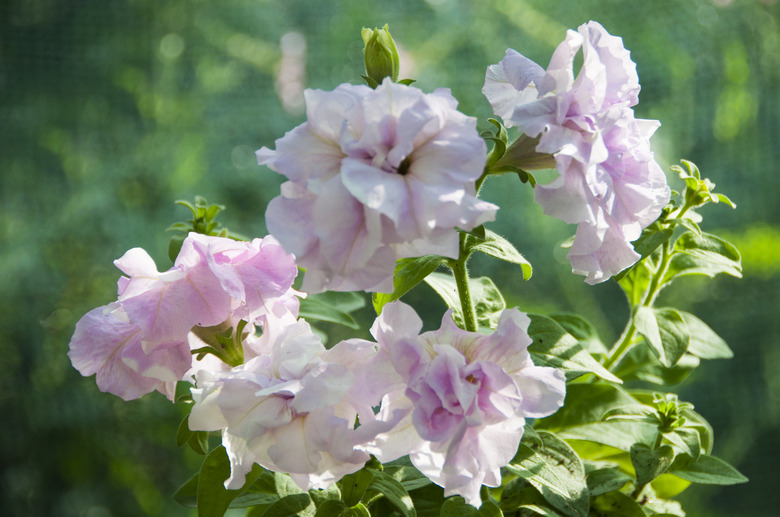Are Petunias Poisonous To Dogs?
Are petunias poisonous to dogs? It's too bad plants can't sue for slander. Petunias (Petunia spp.) got a bad rap somewhere along the line, and you'll frequently hear people say that these bright and beautiful long-lasting flowers are toxic to dogs. But while Fido chowing down a bedful of petunias might put his human in a poisonous mood, that's the only toxic effect likely from the consumption of these bright blossoms of the summer garden.
The old saying that all pretty plants are poisonous is simply false. The petunia is the poster child to prove it. Nothing could be lovelier than these bright and lively blossoms, filling the garden with sweet fragrance from spring until the first frost.
The ease of cultivating the trumpet-shaped beauties doubles a gardener's pleasure. All you have to do is fill a sunny bed or border with well-drained soil and transplant the petunia starts. Petunias are hardy in U.S. Department of Agriculture plant hardiness zones 10 through 11 but can be grown as annuals anywhere.
Eating Petunias Is Not Advisable
Eating Petunias Is Not Advisable
Given the hordes of dogs that are brought into vet's offices every year after eating toxic plants, it's not wise to assume that canines can identify poisonous plants by instinct. Petunias aren't toxic to dogs, cats or other animals, but there are many other, equally pretty plants that are mildly or lethally toxic.
For that reason, it's not a good idea to allow or encourage dogs to lunch on any flowers, even ones that aren't poisonous. Training your dog to stay away from all flowers cuts down on the possibility of your furry family member nibbling on a toxic plant in the future. In addition, too much foraging isn't good for a dog's digestive tract. If your dog seems ill after spending time in the garden, consider a visit to the vet.
Keeping Dogs Out of Trouble
Keeping Dogs Out of Trouble
Let sleeping dogs lie, by all means, but not in your petunia beds. With a little effort, you can protect your petunias as well as Fido from harm. Your options for keeping the two apart are many. They start with good puppy training to set boundaries in the yard, but physical boundaries are not a bad idea either.
Good fencing, whether a physical fence or an invisible fence, can separate pooch and garden. Nothing works better than a fence to make double sure that your dog doesn't get into the flower area of your backyard. Fence height and building material will depend on the size and agility of your pet. Surrounding your flowering plants with a hedge of thorns is another possibility. Or you can make a separate, enclosed dog play area using a dog kennel inside the garden. This is an especially good idea near toxic plants.
If you give your dog adequate attention and exercise, it's much less likely to entertain itself by digging out your garden beds. Running and playing with Fido is part and parcel of pet ownership, so build time into your day to get out and about with your pet.
